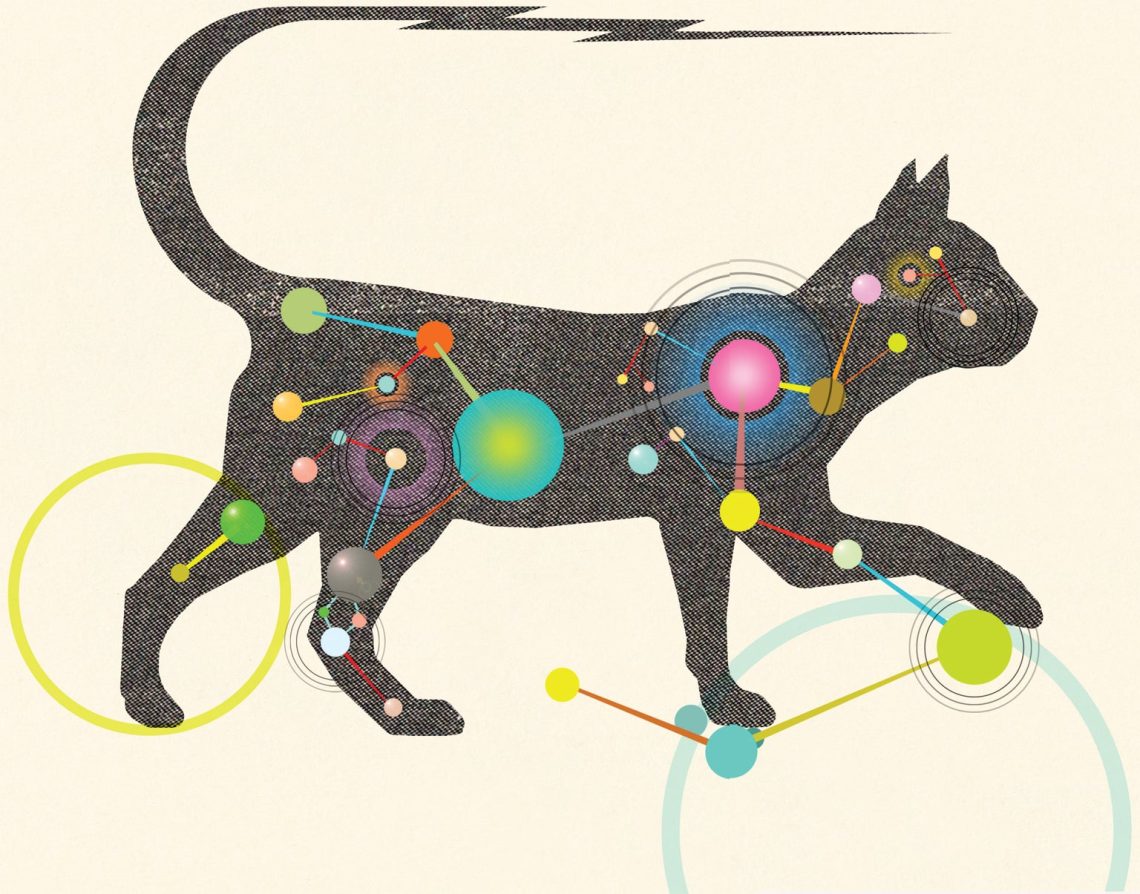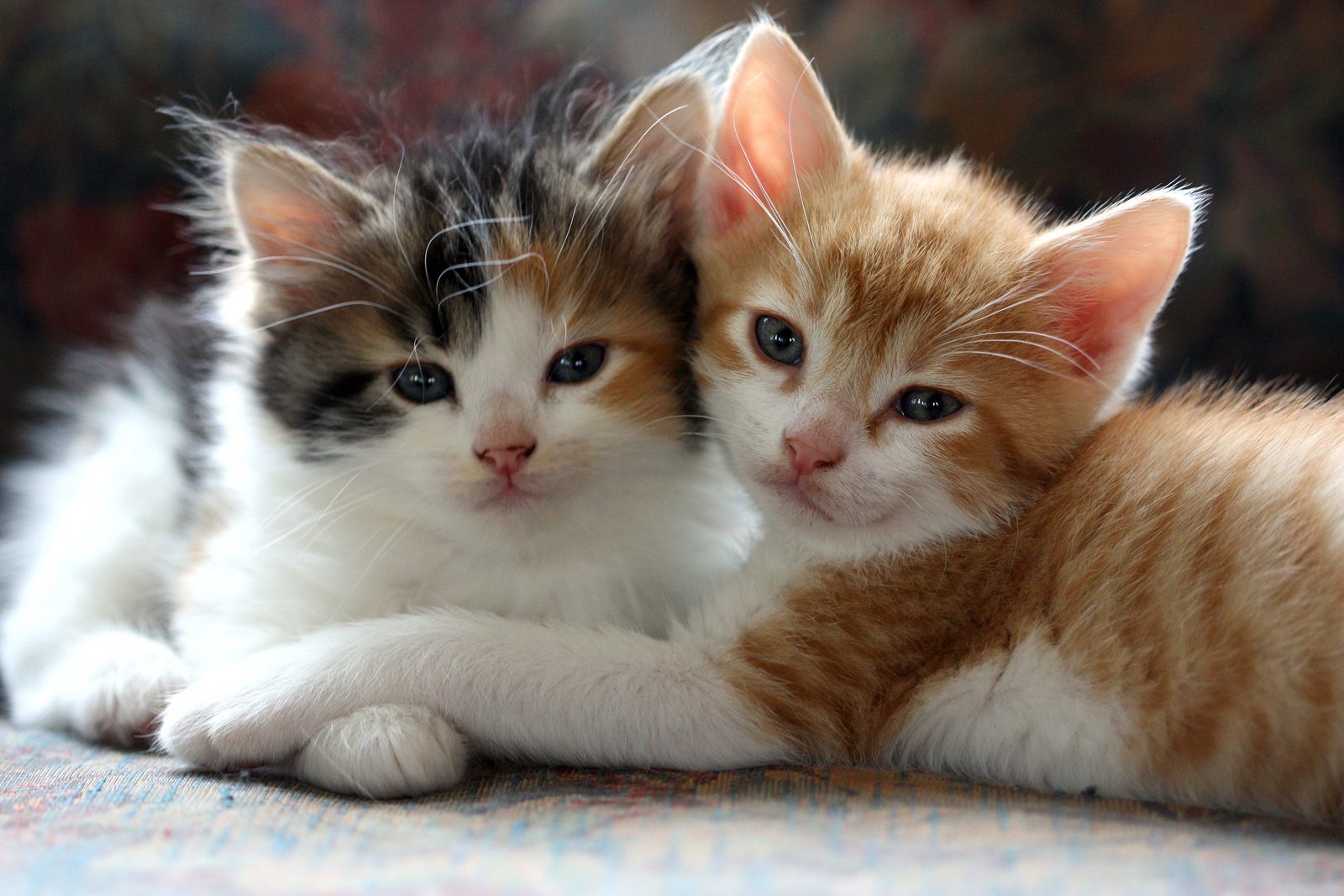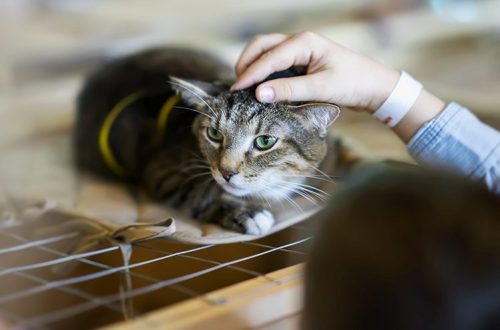
How cats behave: scientists explain
The behavior of a cat often remains a mystery to humans, but this makes them even more interesting to study. This article is about what science can tell about these cute and independent creatures.
Contents
How high can a cat jump
 Do not think that the cat will not get to the tuna sandwich if the owner puts it on the refrigerator. It has been found that cats can jump up to five to six times their body length. This means that some large pets are capable of jumping more than 2,5 meters from the ground. Such amazing jumps allow these tiny creatures to make a combination of strong leg and back muscles, as well as excellent coordination of muscles and vision.
Do not think that the cat will not get to the tuna sandwich if the owner puts it on the refrigerator. It has been found that cats can jump up to five to six times their body length. This means that some large pets are capable of jumping more than 2,5 meters from the ground. Such amazing jumps allow these tiny creatures to make a combination of strong leg and back muscles, as well as excellent coordination of muscles and vision.
How fast are cats?
The cat manages to track down small prey, such as rodents. Partly she is helped by flexibility and speed, partly by her hunting instincts. In addition, the ability to judge distance in cats is an order of magnitude higher than in humans. The fastest domestic cats can reach speeds of up to 48 km / h, which is 3 km / h more than the record human running speed in history.
According to Cuteness, Abyssinian, Somali and Bengal cats are among the fastest cat breeds. Although even the fastest domestic cat will still lose in the sprint to some breeds of dogs, our pets’ fast twitch muscles allow them to switch instantly and change direction very easily.
Do cats always land on their feet?
According to Animal Planet, in most cases, cats land on their paws when they fall, but this does not always happen. During a fall, a cat’s reflexes automatically orient its body position with its back up. However, the success of landing on her feet will depend on how much time she has to complete the necessary flip before contact with the surface.
A survey of veterinarians treating cats that had suffered falls found that animals that fell five stories or more tended to be less seriously injured than those that fell from lesser heights. Another factor that helps cats not get hurt when jumping or falling from a great height is the shock-absorbing property of their paws and shoulder joints. It allows minimizing damage to the skeleton when hitting the ground. However, under no circumstances should this theory be tested in practice.
While cats are great at nimble movements like ninjas in the air, falling can backfire on them. It’s best to let the cat decide when to experience attraction.
How well do cats hear?
According to a study by The Spruce Pets, cats can hear frequencies up to 64 Hz. This is 000 Hz higher than the upper range of human hearing and 44 Hz higher than dogs. One of the reasons for such excellent hearing is that the erect, conical ears of these animals not only perfectly capture sound waves, but also significantly amplify them. There are also about 000 muscle groups in the cat’s ear. This allows them to turn their ears 19 degrees, notes Mother Nature Network. It is partly this excellent hearing that makes cats great hunters, allowing them to sit still and listen for signs of nearby prey. Therefore, it is hardly possible to play catch-up with a cat and come out of this game as a winner.
How well do cats see?
According to Popular Science, a cat’s field of vision is about 200 degrees, about 20 degrees more than a human’s. Their peripheral vision is also wider than that of humans. If we talk about visual acuity in the dark, it should be remembered that there are 8 times more rods per square millimeter of the retina in a cat than in humans. This enhances their ability to detect objects in low light.
Good night vision is also aided by the elliptical shape of the cat’s eye, enlarged corneas, and a reflective layer of tissue at the back of the eye called the tapetum lucidum. Thanks to this layer, light passing through the retina is reflected back, and the eyes of pets glow in the dark. Cats have far fewer cones in their eyes than humans, which means that their ability to perceive colors is limited mainly to grays and blues. Cats are more myopic than humans, so human vision is slightly sharper at a distance.
How does a cat hide its claws?
To say that cats have retractable claws is not entirely true. In fact, cat paws are equipped with special covers that cover the claws when they are not in use. When a cat is excited or frightened, the elastic ligament that connects the claw to the bone in the toe is pulled back to expose the claws. Were it not for this ability to hide them when not in use, cats would have to deal with the annoying problem of claws getting stuck in all sorts of surfaces.
Why do cats have so many color and pattern variations?
Although there are far fewer cat breeds than dog breeds, the variety of traits of domestic cats is simply amazing. Humans have domesticated small felines for thousands of years, and the human practice of selectively breeding cats to isolate certain dominant genetic traits goes back a long way. That is why there are purebred cats in the world, such as Siamese, Himalayan and Russian blue. When it comes to appearance, cat biology offers only a limited number of traits. This is why the typical mongrel domestic cats, also called domestic shorthair cats, fall into a fairly predictable range of coat patterns. These include stripes, tuxedo, calico and tortoiseshell patterns, as well as solid, two- and three-tone colors. Among the colors usually dominated by black, white, gray, brown, blue-gray, chestnut, red, or combinations thereof.
When it comes to appearance, cat biology offers only a limited number of traits. This is why the typical mongrel domestic cats, also called domestic shorthair cats, fall into a fairly predictable range of coat patterns. These include stripes, tuxedo, calico and tortoiseshell patterns, as well as solid, two- and three-tone colors. Among the colors usually dominated by black, white, gray, brown, blue-gray, chestnut, red, or combinations thereof.
The pattern and coloration of a cat is determined by a series of genes that control the pigmentation of the skin and coat, as well as the patterns, shading, and patches over which the color will be distributed. PetHelpful writes that the tabby gene alone has four variants.
Cat science says that the seemingly cute furry creature at heart is a feral predator not far removed from its giant jungle brethren. Knowing the behavior of cats from a biological point of view, about their adaptation to hunting and survival, you can better understand some of her wild antics.





